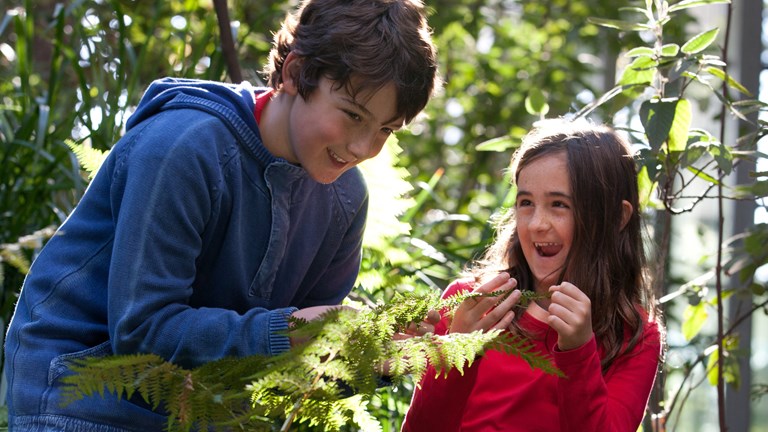
Forest Gallery Visit
- What
- Self-directed
- When
- Terms 1 to 4, Monday to Friday
- Duration
Curriculum links & Accessibility & Access Fund- Year level
- Years K to 10, VCE
- Cost
- education service fee
- Booking information
- Bookings 13 11 02
Discover Victoria's mountain forests when your students step into a living fern gully complete with waterfall. Follow the pathway to discover how water shapes the landscape and take a close-up view of small fish, frogs and skinks.
Emerge from the rainforest into the eucalypt trees where the Forest Gallery is alive with seasonal change. Look up to see the Tawny Frogmouth, while tiny wrens and finches flit across the path. In a clearing at the end, see huge timber poles which represent the impact of fire on the bush.
Primary students can classify insects, frogs and eucalypt leaves, and investigate how their characteristics help them to survive in the forest.
Secondary students consider such questions as: Where do animals live? How do people interact with forest environments? What is the significance of fire for plants and animals?
Students will experience
- Taking a journey through a Victorian mountain forest ecosystem
- Delving deep underground to consider the geological processes shaping this land
- Following the pathway of water as it shapes the landscape
- Emerging into a rainforest rich in life. Look up to see the tawny frogmouth, tiny wrens and finches, and lizards darting across the path
- Country Is Always Talking – a digital experience is available in gallery via QR codes. Hear First People of the Eastern Kulin Nations share their personal perspectives on what it means to connect with Country.
Students will learn
- That the forests that once covered greater Melbourne were rich with unique flora and fauna, as the remnant forests surrounding our city still are
- The forest habit provides the basic needs of plants and animals that live in it – food, air, water and shelter
- There are many different roles within the forest ecosystem such as producers, decomposers and consumers, which can all be closely observed co-existing in the gallery
- Human activity and increased bushfire frequency are examples of impacts that can change the physical conditions of rainforest habitats
- Matter and energy flow through ecosystems can be observed first-hand, enabling the construction of food webs and chains and collection of primary data
- The evolution of Australia’s unique biodiversity has been influenced by our isolation and physical conditions.
Students will be provided
- pre and-post visit activities in the links below.
Victorian Curriculum links
Biological science
Foundation to 2
- plants and animals have basic needs, including air, water, food and shelter; the places where they live meet those needs
VC2S2U02
Levels 3 to 4
- consumers, producers and decomposers have different roles and interactions within a habitat; food chains can be used to represent feeding relationships
VC2S4U03
Levels 5 to 6
- habitats can be described by their physical conditions; changing the physical conditions of a habitat, including by human activity, may affect the growth and survival of organisms
VC2S6U01
Levels 7 to 8
- matter and energy flow through ecosystems and can be represented using models, including food webs and food pyramids; populations will be affected by changing biotic and abiotic factors in an ecosystem including habitat loss, climate change, seasonal migration and introduction or removal of species
VC2S8U04
Levels 9 to 10
- the theory of evolution by natural selection includes the processes of variation, isolation and adaptation and is supported by evidence including the fossil record, biogeography and comparative embryology; the theory explains past and present biodiversity and demonstrates how all organisms have some degree of relatedness to each other
VC2S10U05
Related links
- Museum at Home Learning – Forests and their secrets
- IMAX: Great Bear Rainforest 3D
- App: Field Guide to Victorian Fauna
- Teacher notes – Forest Walks 421.4KB .pdf file
- Early years museum activities – Forest Walks 1014.8KB .pdf file
- Early years pre and post activities – Forest Walks 746.2KB .pdf file
- Middle years museum activities – Forest Walks 866.7KB .pdf file
- Middle years pre and post activities – Forest Walks 962.0KB .pdf file


